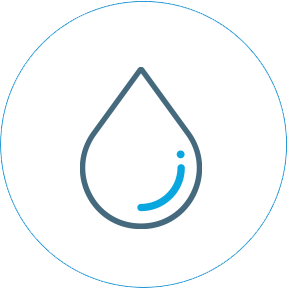
Get the full story of the microbiome
- Importance of Microbial Diversity
- Dysbiosis and Recurrent C. difficile Infection
- Historic Microbiome Restoration Approaches
- Patient and Healthcare Burdens
C. diff infection requires urgent and aggressive action.
A major and urgent threat, according to the US Centers for Disease Control and Prevention (CDC), C. difficile infection is one of the most common healthcare-associated infections in US hospitals, affecting approximately half a million people annually.1,2
Significant complications
associated with C. difficile infection

SEPSIS
27%3,a
aFirst recurrence.

Colectomy
7%3,a
aFirst recurrence.

Heart Failure
43%4

Subsequent Recurrence
up to 60%5

Anxiety
13.9%6

Ptsd
0.3%6

Depression
15.3%6



Mortality associated with C. difficile infection:
30-day mortality rate of C. difficile infection ranges from 5% to 14% after an initial episode.2,7
A study of Medicare patients with community-acquired C. difficile infection documented a 9% mortality rate during inpatient stay.8
In a recent CDC reseach letter, patients (N=9) with severe-acute-respiratory syndrome coronavirus 2 (COVID-19) and C. difficile infection had a 44% mortality rate.9
Unfortunately, C. difficile infection may be the beginning of a vicious cycle of recurrence.



THE BURDEN OF CDI MAY INCREASE
WHEN THE INFECTION RECURS
Can the power of the microbiome be
unlocked to break the cycle of rCDI?
Share this with colleagues!

References
- Centers for Disease Control and Prevention website. 2021 Antibiotic Resistance Threats Report: Clostridioides Difficile. https://www.cdc.gov/drugresistance/pdf/threats-report/clostridioides-difficile-508.pdf. Accessed August 25, 2021.
- Guh AY, Mu Y, Winston LG, et al. Trends in U.S. burden of Clostridioides difficile infection and outcomes. N Engl J Med. 2021;382(14):1320-1330.
- Feuerstadt P, Boules M, Stong L, et al. Clinical complications in patients with primary and recurrent Clostridioides difficile infection: a real-world data analysis. SAGE Open Medicine. January 2021. doi:10.1177/2050312120986733
- Nelson W, Scott TA, Boules M, et al. Health care utilization and costs of recurrent Clostridioides difficile infection in the elderly: a real-world claim analysis. J Manag Care Spec Pharm. 2021;27(7):828-838.
- Leong C, Zelenitsky S. Treatment strategies for recurrent Clostridium difficile infection. Can J Hosp Pharm. 2013;66(6):361-368.
- Scott TA, Unni S, Boules M, et al. Clinical burden of recurrent Clostridioides difficile infection in the Medicare population. Presented at: 2020 Digestive Disease Week; May 2-5, 2020; Chicago, IL.
- Freeman J, Bauer MP, Baines SD, et al. The changing epidemiology of Clostridium difficile infections. Clin Microbiol Rev. 2010;23(3):529-549.
- Collins CE, Ayturk MD, Flahive JM, et al. Epidemiology and outcomes of community-acquired Clostridium difficile infections in medicare beneficiaries. J Am Coll Surg. 2014;218(6):1141-1147.e1.
- Sandhu A, Tillotson G, Polistico J, et al. Clostridioides difficile in COVID-19 patients, Detroit, Michigan, USA, March–April 2020. Emerg Infect Dis. 2020;26(9).2272-2274.
